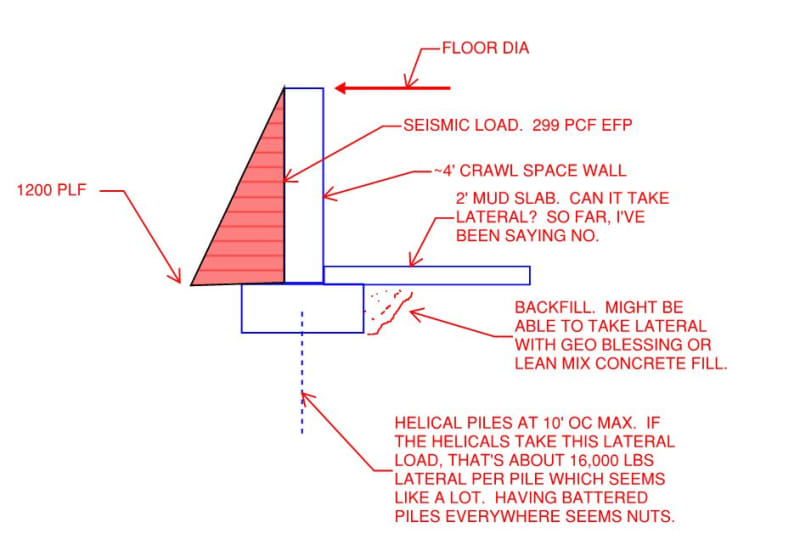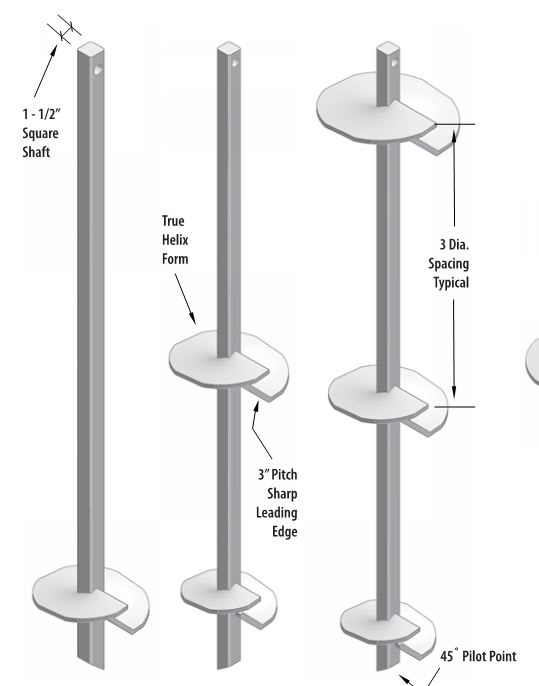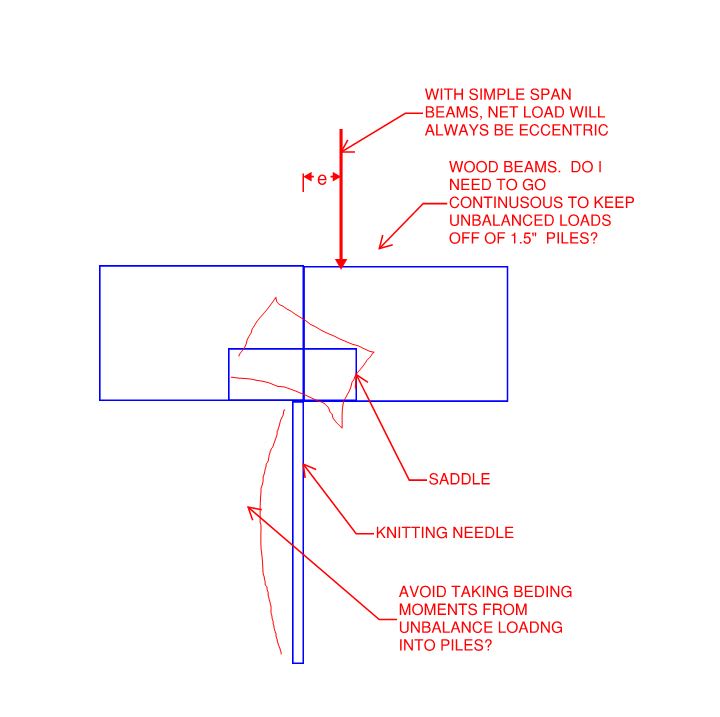Thanks for the continuing help gentlemen.
Updates based on conversations with the pile supplier:
1) It seems that we'll be using 1.5" square pile shafts rather than 3" pipe sections. This initially made me want to projectile vomit but I've mostly made my peace with it now.
2) As one might anticipate, those 1.5" shafts can only resist lateral loads via a single resistance mechanism: battering. So, wherever I can't mobilize passive/active soil resistance, which is most places in my opinion, my lateral loads will be resisted by battered piles. Batter batter batter.
3) The pile supplier's engineer took my question about the capacity design of the pile connection to his network and their interpretation is a bit different from what we've been contemplating. Rather than As x Fy, they take "short column" to mean a pile that is not governed by buckling but, rather, will have its connection force limited by the geotechnical capacity of the pile. This concerns me a bit in that, for capacity design purposes, I do not feel that I should be using the pile design capacity that I'm using for gravity loads and which is surely governed by settlement. I'd expect the true, load carrying capacity to be much higher. The piling engineer has mentioned torque values and how that establishes piling capacity. I'm having trouble understanding how that gets me to a true maximum capacity in a seismic, capacity design sense. That probably just reflect my own lack of familiarity with helical pile design. If anyone feels up to the task of enlightening me on this aspect of things, I'd be grateful to hear about it.
4) The piling engineer also suggested that just doing a basic, AScE overstrength design, rather than a true capacity design, might be a good fit here. I agree and may well take that approach if I can verify that doing so won't run me afoul of any code requirements.




